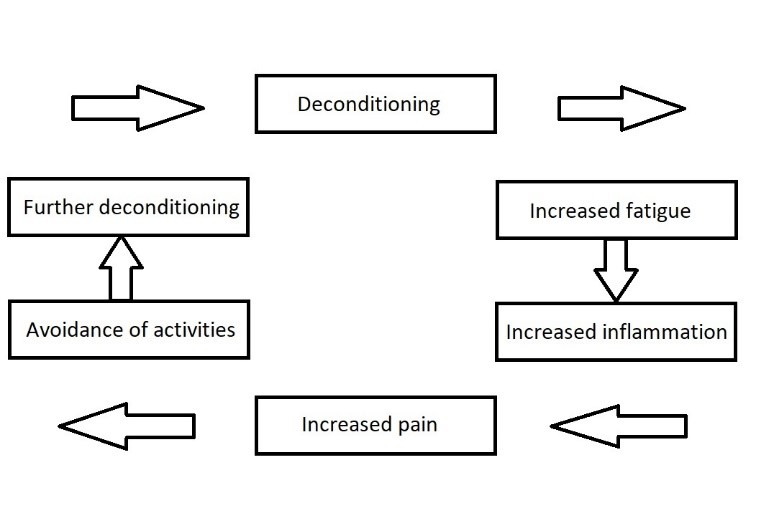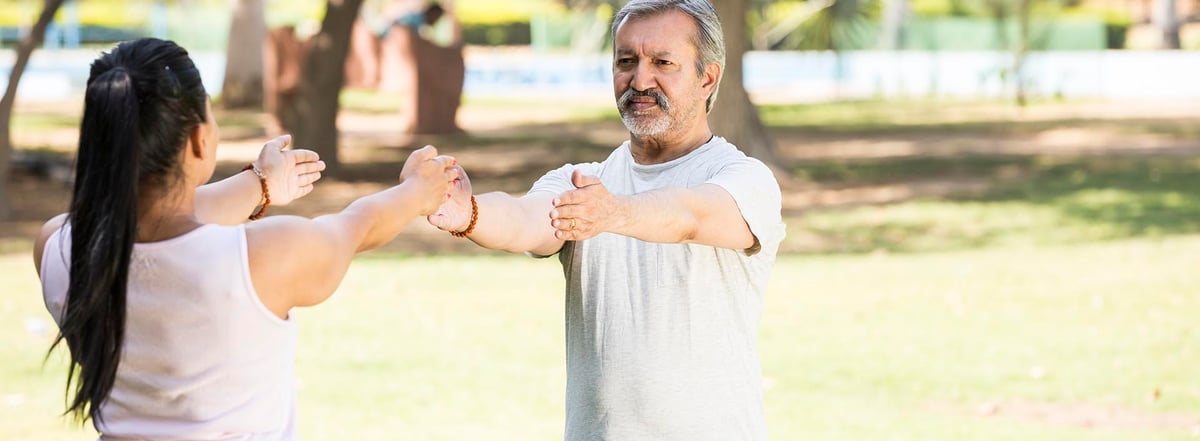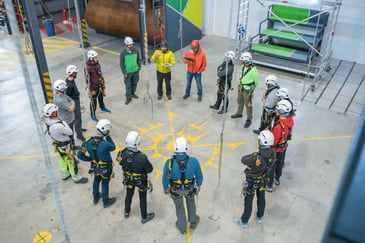Our misunderstanding of pain and pain management can create negative pain behaviours that lead to further deconditioning after injury. Altius Group Exercise Physiologists Brendon Kenny and Jack Whitaker explain pain, pain management and deconditioning and why rest is not best.
Pain is universal, affecting all of us in varying degrees and intensities. Our different experiences of pain means our understanding of pain can easily be misinterpreted, misunderstood and mis-managed, potentially disturbing large parts of our lives. In the injury and rehabilitation space, pain is the number one barrier that disrupts and prevents individuals who are recovering and aiming to return to their normal lives.
Understanding Pain and Explaining Pain: Why it’s Hard
- Unrelatable Explanations: Often, when any explanations of pain are given – they are completely unrelatable to people. They are habitually scientific with large amounts of terms and phrases that are hard to understand. Explanations need to be individualised and relatable to an individual’s experience – explained in a way that they understand, ultimately leading to active, positive behaviour change. Using analogies, anecdotes and examples, including personal experiences, aids understanding. Jack believes “A person will find it hard to enact positive change if they don’t understand your explanation and take it on board”.
- Pain ≠ Damage: Another widespread misconception about pain is that symptoms and pain equal further damage to the body. Consider, if you place your hand over an open flame, what is your immediate reaction? Most people pull their hand away once the heat becomes too much and causes pain. This is because your body uses pain as a warning system to alert you of potential damage to tissues if an activity continues.
- The Complex Neuroscience of Pain: While neuroscience pain explanations are true, how many individuals have the background to fully understand them? It just doesn’t resonate with most individuals. For an individual in pain, dealing with simple tasks is hard enough, let alone wrapping their head around the central nervous system. All an individual knows is they have pain and they can feel it, so it’s important to explain pain in simple ways to promote positive recovery.
How Negative Pain Management Behaviours Impact Recovery
After injury, individuals are going to experience pain – there is no avoiding it. When passive responses to pain, such as resting and passive treatment modalities, continue - individuals engage less and less in their normal everyday activities. As a result, the lack of participation in work, domestic tasks, engagement in the local community and social activities – causes individuals experiencing pain to become weaker and lose the fitness they would otherwise gain through participating in these activities of daily living.
Research tell us that people start losing strength and fitness 24 hours after an injury and as such, reduced activity levels immediately lead to a significant decrease in tolerance and conditioning of the body to normal everyday activities. Simply put, the body can no longer tolerate the load it once did leading to fatigue, overload, inflammation, tightness and ultimately pain. The majority of us refer to this as a “flare-up” as our body has exceeded its tolerance and reacts accordingly. Once your tolerance becomes too low through this inactivity, it promotes further extensive fatigue, inflammation, tightness and ultimately, pain which is present most, if not, all of the time.

What is Deconditioning and How Does it Affect Pain?
Deconditioning is ‘having lost fitness or muscle tone, especially through lack of activity.’ While most injuries in the body heal as good as they can within 3—6 months, why is it we continue to experience pain? Why may individuals continue to experience pain after an injury has healed according to their scans? One major factor is that their body has deconditioned.
Just like when you haven’t exercised for an extended period, during your first session back you’re sore because your body is not conditioned to tolerate the increased activity. Now imagine what occurs after an injury, significantly reduced activity levels and time out from normal everyday activities for an extended period! Your body becomes more deconditioned and is only able to tolerate a smaller amount of activity. The longer this trend continues, the harder recovery becomes as your body is only able to tolerate small amounts of load, sometimes resulting in pain 24 hours of the day.

Why Rest is Not Best in Pain Management
When it comes to managing pain from injury, a common mistake is resting for too long. We all experience a certain unavoidable level of muscle wastage after an injury. The body does need time to heal and during this time our tolerance for normal activities such as sitting, standing and lifting reduces. We mentioned, most injuries heal as good as they can within
3 -6 months, but remember time will never replace what you lose in strength and fitness, and this requires work! Should we just keep avoiding activities because they are harder? No.
Research shows that those who cope best are those who can gradually become more active. We need to encourage people to become more active despite their pain – rest is not best!
Tips for Pain Management
- Gradually increase activity levels: Exercise to strengthen and recondition your body, this will improve functional tolerances and confidence with activity.
- Pace yourself: Education about macro and micro pacing - performing more activity but not over-doing it or overloading your body, helps.
- Stretch: Perform daily stretches to reduce the build-up of muscle tension and external load.
- Lift with care: Correct manual handling is useful for reducing flare-ups and managing pain.
- Make regular postural changes: Applying alternating postures regularly to reduce tension build-up and load.
- Return to work and Activities of Daily Living: The sooner individuals return to work (in any form), social, community, financial engagement and domestic tasks (ie, normal everyday lives) the greater their prognosis. Work provides routine, purpose and structure to our lives which can be important to break the inactivity cycle and return to pre-injury living.
- Modify activities: Where relevant, attempt to perform your normal work, social, community and leisure activities but in modified ways. This may include walking a smaller distance, asking your family for help with domestic tasks or regularly changing your body’s position at work.
- Try deep breathing/mindfulness/relaxation techniques: Thinking about pain 24/7 certainly isn’t healthy. Spending a small amount of time each day focussing on breathing to relax the body and mind and can be a great distraction.
- Work towards self-management: Set SMART goals to focus on managing pain independently long-term, large or small – make them specific to you.
OccHealth by Altius conducts Understanding Pain Workshops to help employees experiencing pain.






